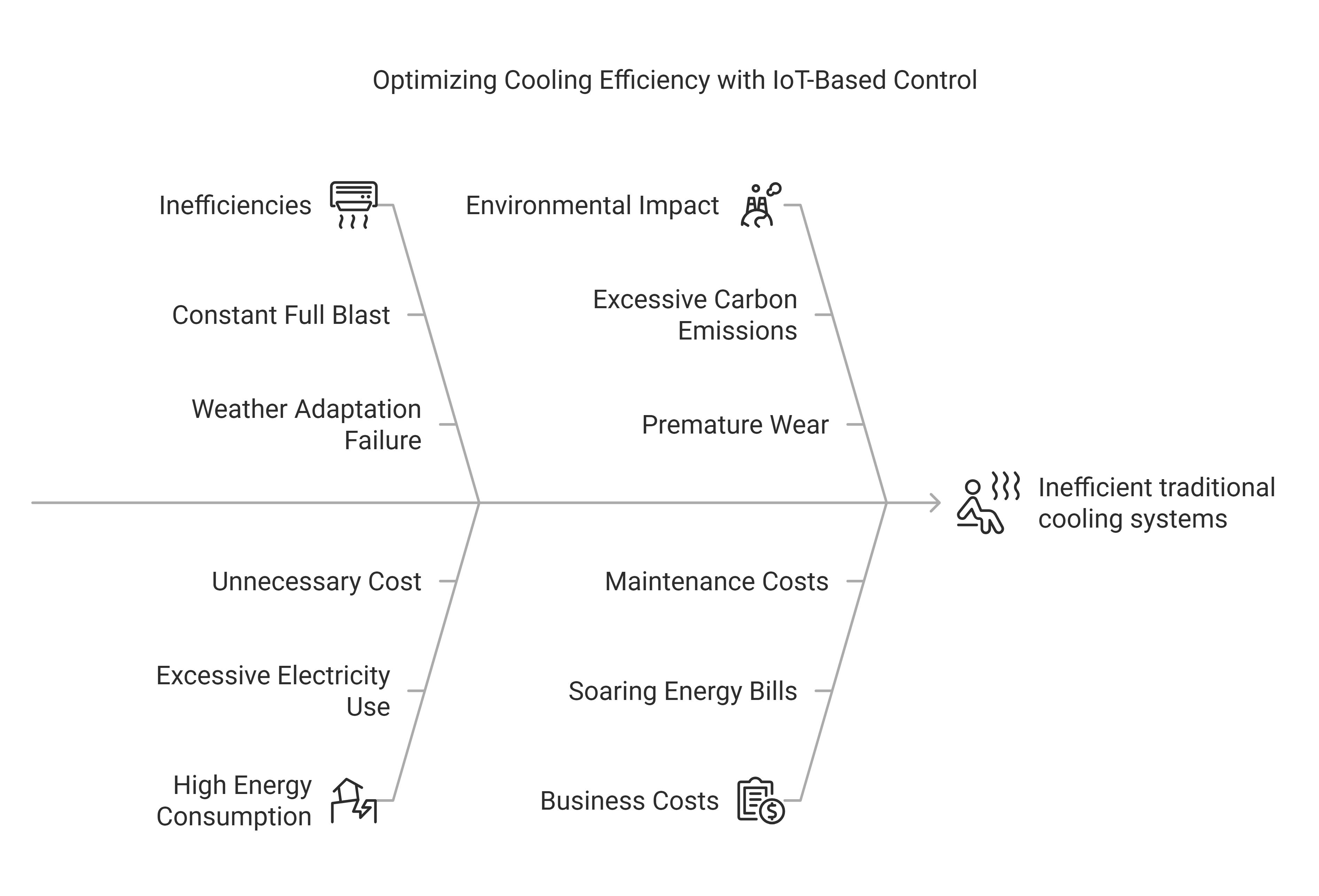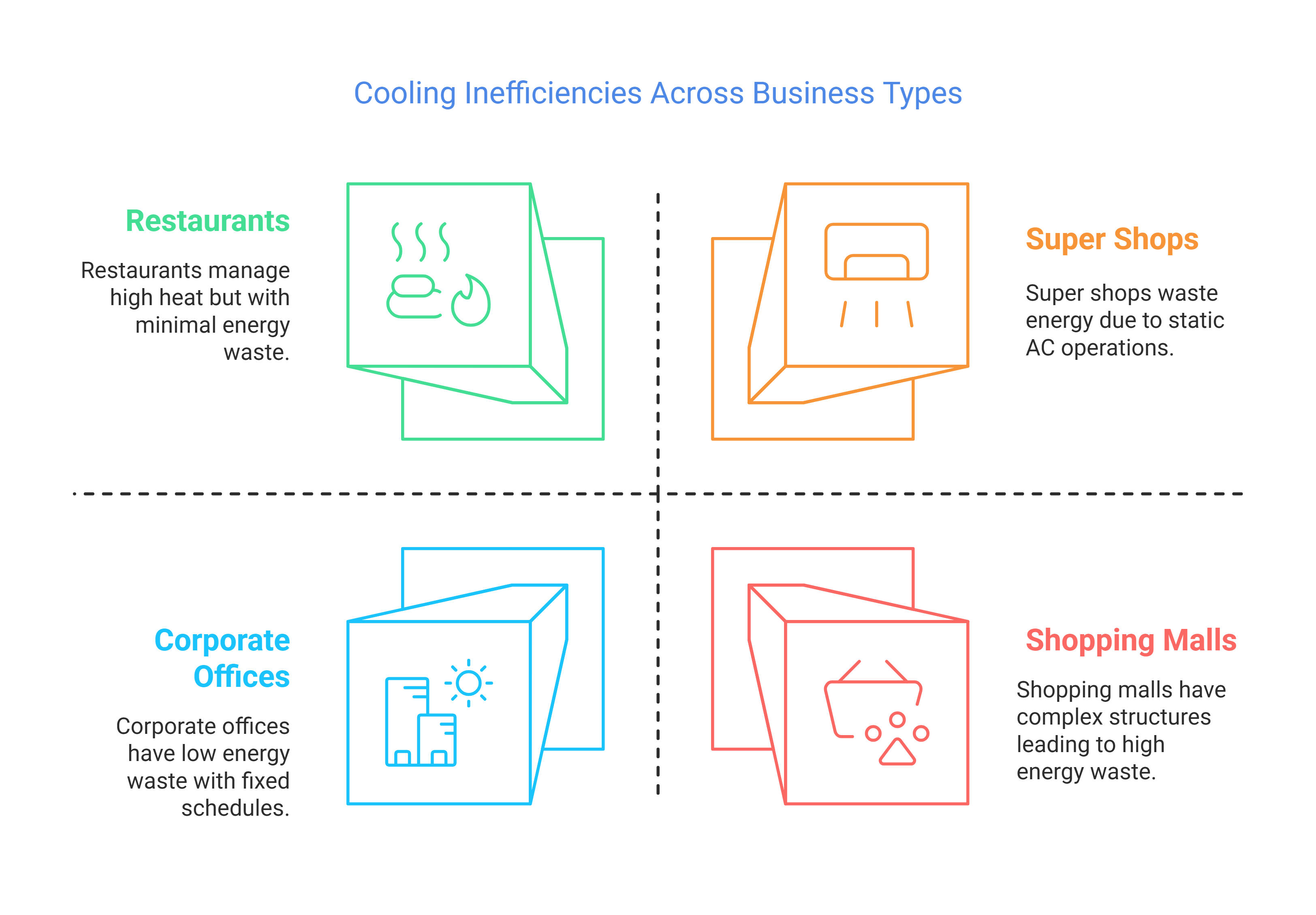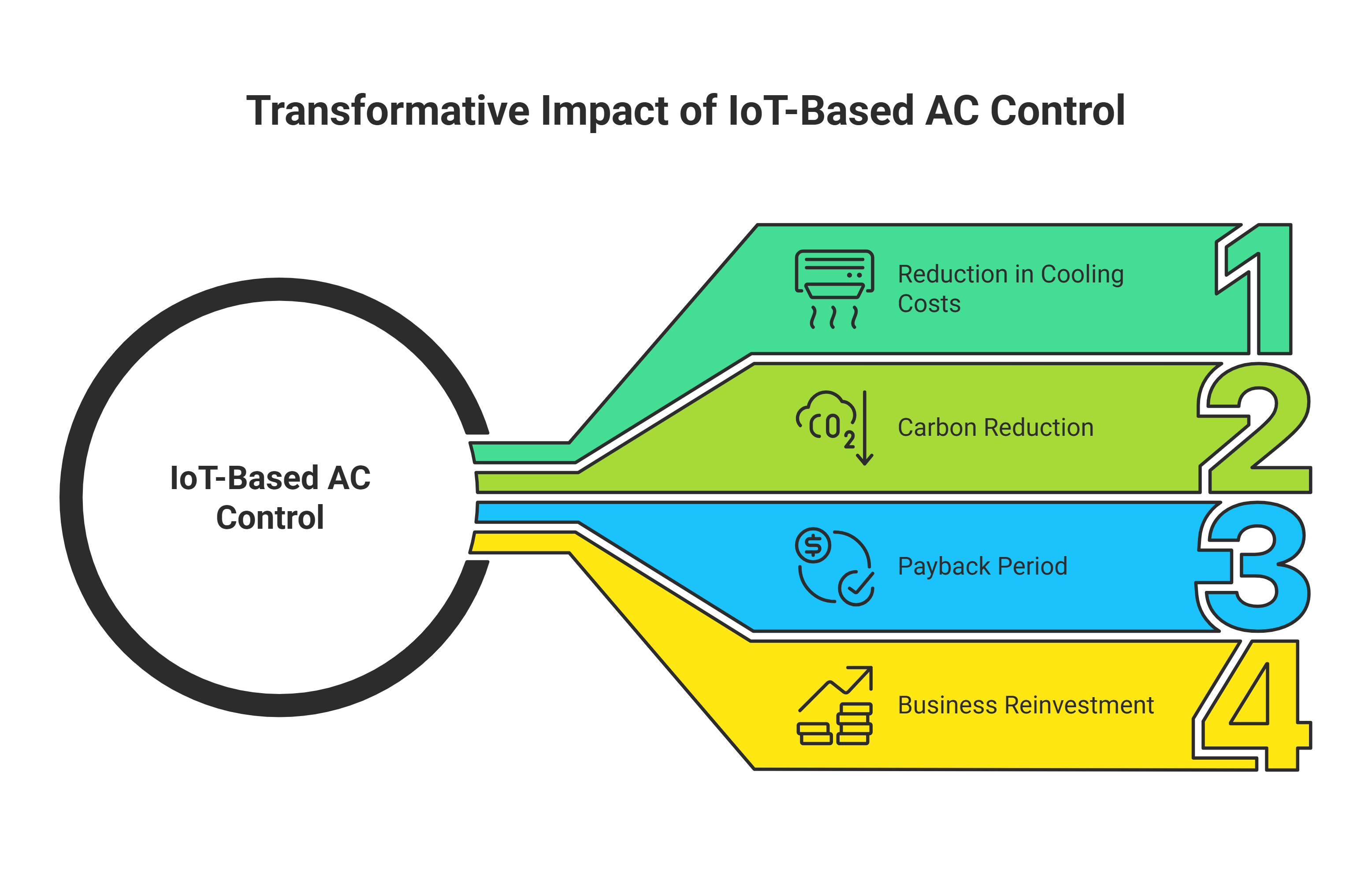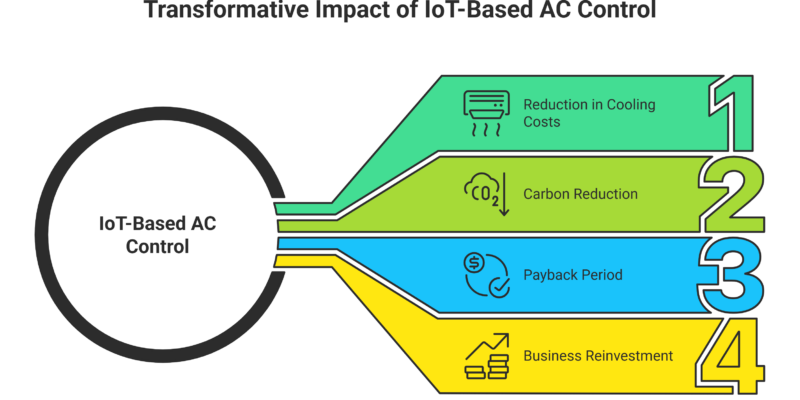Revolutionizing Cooling Efficiency: How IoT-Based AC Control is Transforming Super Shops, Restaurants, Shopping Malls, and Corporate Offices
Imagine walking into a super shop, restaurant, shopping mall, or corporate office—and feeling the perfect temperature, no matter the weather outside. Now, imagine that cooling system automatically adjusting in real-time, optimizing comfort while cutting unnecessary energy waste and costs.
For businesses in these sectors, cooling is a non-negotiable necessity. But traditional air conditioning systems are riddled with inefficiencies—running at full blast when spaces are empty, failing to adapt to weather changes, and consuming far more electricity than needed. The result? Soaring energy bills, excessive carbon emissions, and premature wear.
IoT-based AC control is changing that. By leveraging real-time data, automation, and AI-driven intelligence, businesses can slash cooling costs, improve operational efficiency, and reduce their carbon footprint—all while maintaining the perfect indoor climate.

The Cooling Challenge: Why Businesses Are Losing Money
Cooling inefficiencies are costing businesses millions in unnecessary energy expenses. Here’s where the problem lies:
Super Shops & Retail Stores
🛒 ACs run at full capacity even during low footfall hours.
🛒 Refrigeration and cooling operate independently, creating energy overlaps.
🛒 Heat from lighting and equipment increases cooling loads unnecessarily.
Restaurants & Food Chains
🍽️ Kitchens generate high heat, forcing ACs to work harder.
🍽️ Customers come and go frequently, disrupting temperature stability.
🍽️ Cooling is left running overnight, wasting energy when spaces are empty.
Shopping Malls & Entertainment Centers
🏬 Large open spaces require complex cooling distribution.
🏬 Foot traffic fluctuates throughout the day, but ACs don’t adjust dynamically.
🏬 Multi-floor structures lead to uneven temperature zones, creating discomfort.
Corporate Offices & Co-Working Spaces
🏢 Employees work at different hours, yet ACs run at a fixed schedule.
🏢 Conference rooms and unused spaces stay cooled unnecessarily.
🏢 Lack of centralized monitoring leads to excessive energy wastage.
The common issue? Traditional cooling systems aren’t smart enough to optimize energy use dynamically.

The Smart Solution: How IoT-Based AC Control Transforms Cooling
With IoT-powered AC management, businesses no longer have to guess, manually adjust, or waste energy. This system monitors, analyzes, and optimizes cooling in real-time using AI-driven automation.
1. Real-Time Cooling Optimization
✅ Adaptive Cooling – Automatically adjusts AC settings based on foot traffic, occupancy, and external temperature.
✅ Zonal Cooling – Customizes cooling for different sections of malls, offices, or restaurants based on usage.
✅ Weather-Based Adjustments – Reduces cooling intensity on cooler days to prevent energy waste.
Example: A corporate office sees a drop in employees after 5 PM. IoT AC control automatically reduces cooling in unused areas, saving energy without affecting comfort.
2. Energy & Carbon Monitoring for Cost Control
📊 Live Energy Dashboards – Business owners can track cooling costs in real-time and identify waste areas.
🌍 Carbon Footprint Tracking – Super shops and malls can measure their environmental impact and optimize accordingly.
🔍 Automated Reports – AI-driven insights highlight where cooling adjustments can save thousands in electricity bills.
Example: A shopping mall identifies that cooling near escalators is overused and automatically reduces output, cutting monthly electricity costs by 18%.
3. Predictive Maintenance to Prevent Breakdowns
⚙ AI-Based Fault Detection – Alerts businesses before an AC unit fails, preventing costly repairs.
⏳ Automated Health Monitoring – Ensures HVAC systems last longer and perform efficiently.
🔧 Remote Troubleshooting – Reduces the need for on-site technicians, saving time and labor costs.
Example: A restaurant’s AC system detects a 20% efficiency drop and schedules preventive maintenance, avoiding a sudden breakdown during peak dinner hours.
4. Remote Control & Smart Scheduling
📱 Mobile & Cloud Control – Adjust AC settings across multiple locations from a single dashboard.
🔄 Automated Scheduling – Ensures cooling only operates when needed, eliminating overnight energy waste.
🚀 Multi-Branch Integration – Perfect for retail chains and franchises, enabling centralized AC management.
Example: A restaurant chain with 10 locations automates AC schedules, reducing energy costs by 20% chain-wide.

Real-World Impact: Energy & Cost Savings at Scale
Businesses already using IoT-based AC control are seeing game-changing results:
📉 15%+ Reduction in Cooling Costs – Optimized energy use cuts down electricity bills.
🌱 20 Tons of Carbon Reduction Per Year – Significant environmental impact per location.
💰 5-6 Month Payback Period – The system pays for itself within half a year.
This translates into thousands of dollars in annual savings, allowing businesses to reinvest in operations, sustainability, and customer experience.
Beyond Cost Savings: Aligning with Global Sustainability Goals
Governments and regulatory bodies worldwide are tightening energy efficiency standards. Businesses that adopt smart cooling solutions today will be ahead of compliance mandates, avoiding future penalties and inefficiencies.
This system aligns with key United Nations Sustainable Development Goals (SDGs):
✅ SDG 9 – Industry, Innovation & Infrastructure → AI-driven HVAC optimization.
✅ SDG 11 – Sustainable Cities & Communities → Lower urban energy waste.
✅ SDG 12 – Responsible Consumption & Production → Smarter energy use.
✅ SDG 13 – Climate Action → Significant reduction in carbon emissions.
For businesses, sustainability isn’t just a trend—it’s a necessity. With IoT-powered cooling, companies can reduce operational costs while actively contributing to global energy conservation efforts.
The Future of Smart Cooling in Retail, Hospitality, and Corporate Spaces
IoT-based cooling is just the beginning. Next-generation HVAC innovations will take energy efficiency even further, including:
🚀 AI-Driven Demand Response – AC systems will adjust based on peak electricity pricing, reducing costs even more.
🌞 Integration with Solar Power – Retailers and offices can pair IoT cooling with renewable energy sources.
🏙️ Smart City Connectivity – Buildings will sync their cooling systems with city-wide energy grids for optimized efficiency.
Forward-thinking businesses that invest in intelligent cooling today will future-proof their operations, reducing costs while enhancing sustainability.
Final Thoughts: Why Smart AC Control is a Business Necessity
For super shops, restaurants, shopping malls, and corporate offices, the benefits of IoT-driven AC optimization are undeniable:
✔ Lower Energy Costs – Eliminate unnecessary cooling expenses.
✔ Enhanced Operational Efficiency – Automate cooling based on real-world data.
✔ Reduced Carbon Footprint – Contribute to sustainability goals.
✔ Longer HVAC Lifespan – Minimize repairs and downtime.
✔ Improved Customer & Employee Comfort – Maintain optimal indoor environments.
With energy prices rising and sustainability becoming a business priority, IoT-based AC control is no longer a luxury—it’s an essential investment.
🚀 Is your business ready to cut cooling costs and embrace smart energy management? The future of intelligent, automated, and cost-effective cooling starts today.




